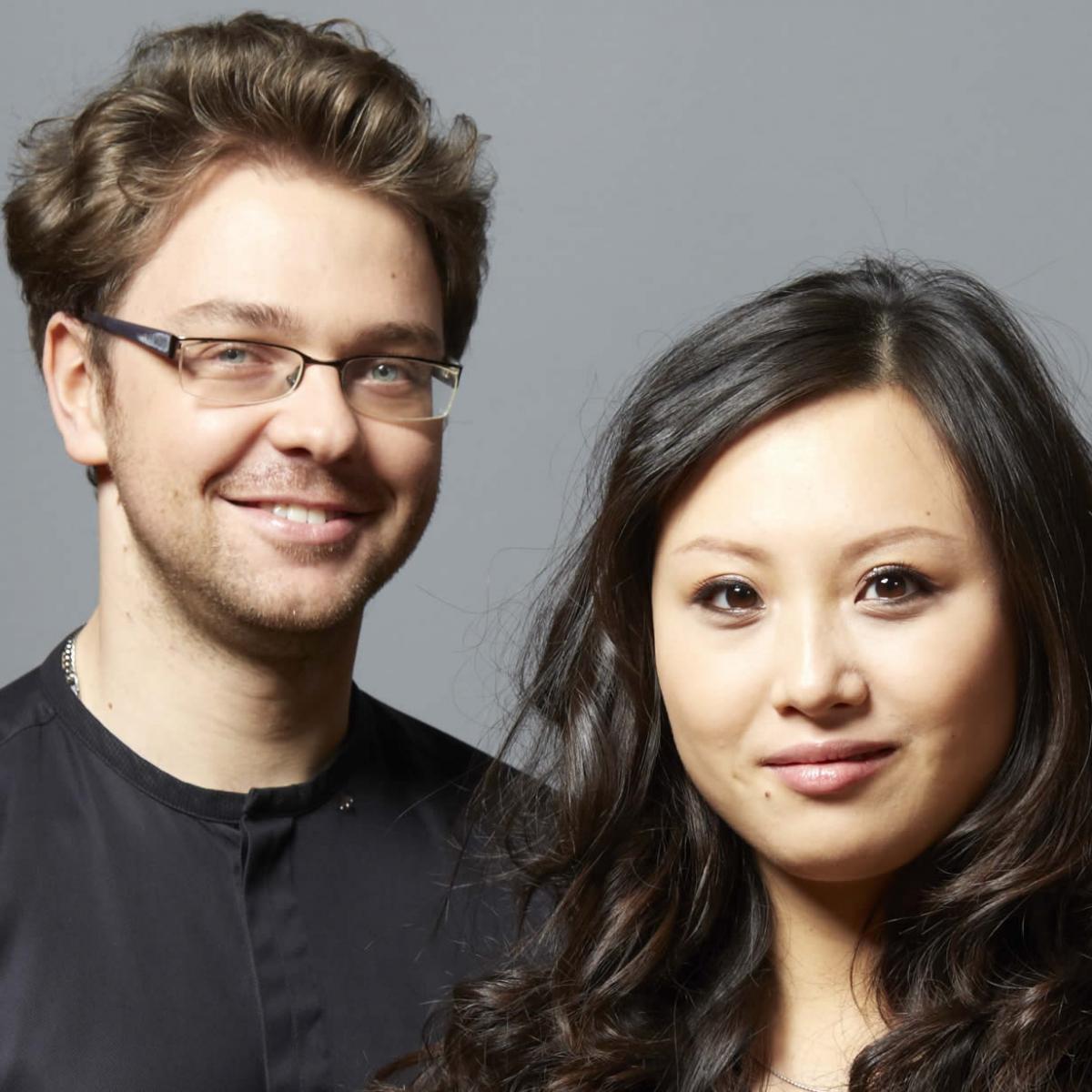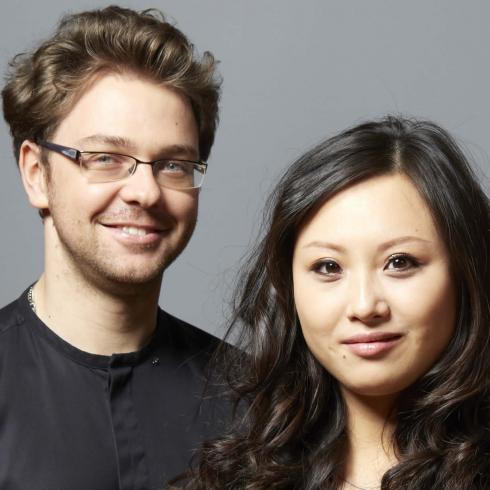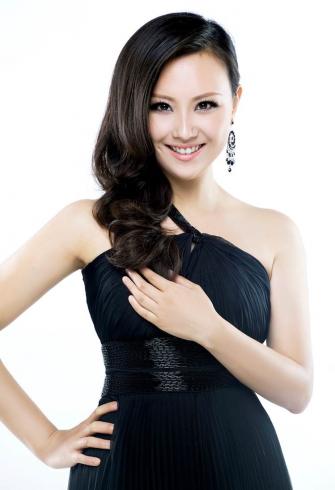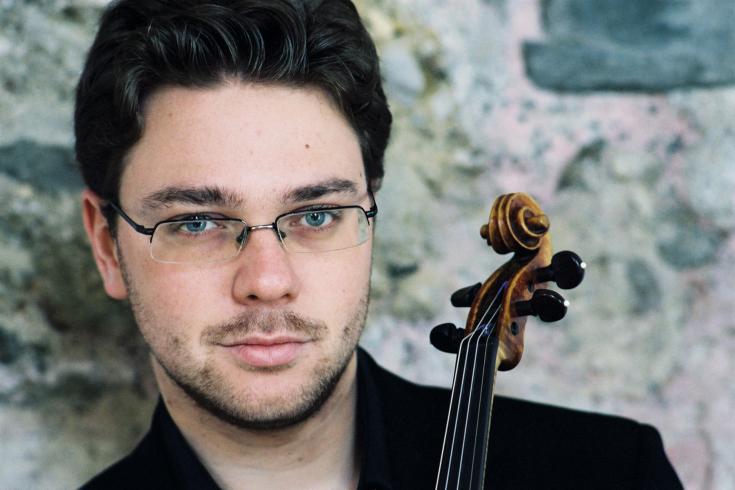Alexander Sitkovetsky & Wu Qian
Violin and Piano

Alexander Sitkovetsky and Wu Qian will make their DC debut with selections by Robert Schumann, Manuel de Falla, Alfred Schnittke, and Edvard Grieg.
Program
Alexander Sitkovetsky and Wu Qian are both highly distinguished soloists. Sitkovetsky, a student of Yehudi Menuhin, comes from a musical family—his father played in the pioneering Russian rock band Autograph and his uncle is violinist Dmitry Sitkovetsky. He has worked regularly with Wu Qian for many years— they were fellow students at the Menuhin School and won the Trio di Trieste Duo Competition in 2011. Two magnificent sonatas for violin and piano—Schumann’s d minor and Grieg’s Sonata in c minor, famously recorded by Kreisler and Rachmaninoff—accompany de Falla’s vibrant arrangements of popular Spanish songs alongside Schnike’s pastiche Suite in the Old Style, derived from the composer’s film scores.
PROGRAM:
ROBERT SCHUMANN (1810-1856)
Violin Sonata No. 2 in d minor, Op. 121 (1851)
Ziemlich langsam - Lebhaft
Sehr lebahft
Leise, einfach
Bewegt
MANUEL DE FALLA (1876-1946)
Suite populaire espagnole for Violin and Piano (1914)
El Paño Moruno
Nana
Canción
Polo
Asturiana
Jota
ALFRED SCHNITTKE (1934-1998)
Suite in the Old Style for Violin and Piano (1972)
Pastorale
Balletto
Minuetto
Fuga
Pantomima
EDVARD GRIEG (1843-1907)
Violin Sonata No. 3 in c minor, Op. 45 (1886)
Allegro molto appassionato
Allegretto espressivo alla Romanza
Allegro animato
About the Artists
Alexander Sitkovetsky was born in Moscow into a family with an established musical tradition. He made his concerto debut at the age of eight and in the same year started to study at the Menuhin School.
He has gone on to perform with the Netherlands Philharmonic, the Philharmonia, Royal Philharmonic, Tokyo Symphony, Brussels Philharmonic, the European Union Chamber Orchestra, Academy of St. Martin’s in the Fields, St Petersburg Symphony, Moscow Symphony, Welsh National Opera and the BBC Concert Orchestra among many others.
During the 2014/2015 season Alexander made his debut with the Yomiuri Nippon Symphony Orchestra in Tokyo and with the BBC Scottish Symphony Orchestra in Glasgow, as well as with the Riga Sinfonietta, Poznan Philharmonic and the Orquesta Filarmónica de Bolivia. He was guest soloist in two nationwide tours of the UK with the Brussels Philharmonic and the St Petersburg Symphony. He toured the length and breadth of Australia as guest director with the Australian Chamber Orchestra Collective. He also performed a six-date series of sold-out concerts with the Royal Philharmonic Orchestra at the Royal Albert Hall. Forthcoming highlights include his debut with the London Philharmonic Orchestra, the Munich Chamber Orchestra, the Norwegian Chamber Orchestra as well as the Tonkünstler Orchestra Vienna.
In 2011, Alexander was awarded first prize at the Trio di Trieste Duo Competition with pianist, Wu Qian, whom he subsequently embarked on a twenty concert tour in Italy as well as a recital at the Weill Hall in Carnegie Hall.
His new recording for CPO Records of Andrzej Panufnik’s Violin Concerto has been critically acclaimed and was winner of the 2015 International Classical Music Awards Special Achievement Award. Alexander is an alumni member of Chamber Music Society two at Lincoln Center (2012-2015).
Winner of the 2016 Lincoln Center Emerging Artist Award, as well as classical music’s bright young star award for 2007 by The Independent, pianist Wu Qian has maintained a busy international career for over a decade.
She has appeared as soloist in many international venues including the Wigmore, Royal Festival, and Bridgewater halls in the UK, City Hall in Hong Kong, Amsterdam’s Concertgebouw, The Kennedy Center in Washington, DC, Konzerthaus Orchester in Berlin, the Brussels Philharmonic, the London Mozart Players, I Virtuosi Italiani, the European Union Chamber Orchestra, and the Munich Symphoniker.
She won first prize in the Trio di Trieste Duo Competition and the Kommerzbank Piano Trio competition in Frankfurt, and has received numerous other awards.
Appearances this season include performances in the US, UK, Germany, Korea, Australia, Spain, and The Netherlands and collaborations with Alexander Sitkovetsky, Leticia Moreno, Cho-Liang Lin, Clive Greensmith, and Wu Han.
Her debut recording of Schumann, Liszt, and Alexander Prior was met with universal critical acclaim.
She is a founding member of the Sitkovetsky Piano Trio with which, in addition to performing in major concert halls and series around the world, she has released two recordings on the BIS label and also a disc of Brahms and Schubert on the Wigmore Live Label. Wu Qian is a current member of Chamber Music Society Two at Lincoln Center.
Notes
Robert Schumann, Violin Sonata No. 2 in D minor, Op. 121 (1851)
Schumann’s D minor Violin Sonata was written in a burst of creative activity between October 26 and November 2, 1851, a month after his Sonata in A minor, Op. 105. Schumann told his friend Joseph von Wasielewski (concert-master of the orchestra in Düsseldorf): “I did not like the first violin sonata, so I wrote a second, which has hopefully turned out better.” The D minor Sonata is more substantial than its slightly earlier companion: it is in four movements rather than three, and its mood is more dramatic and less introspective. Less than two weeks after finishing the work, it was performed privately by Wasielewski with Clara Schumann. The published dedication is to the violinist Ferdinand David. A close friend of the Schumanns, he was concertmaster of the Gewandhaus Orchestra (Mendelssohn wrote the famous Violin Concerto for him). On a visit to Leipzig in March 1852, Clara played it with David at a private concert, which may have been when Schumann decided to dedicate it to him. The public premiere took place more than a year later, on October 29, 1853 in Düsseldorf. The violinist on this occasion was Joseph Joachim. It was his first concert with Clara Schumann – the start of decades of music-making together. Joachim was delighted with the concert, writing to a friend afterwards: “You know how expressively Clara interprets Schumann’s music. I have extraordinary joy in playing Robert’s works with her … I must to tell you about the new Sonata in D minor which Breitkopf & Härtel will bring out very soon. We played it from the proof-sheets. I consider it one of the finest compositions of our times in respect of its marvellous unity of feeling and its thematic significance. It overflows with noble passion, almost harsh and bitter in expression, and the last movement reminds one of the sea with its glorious waves of sound.”
Joachim’s description of the “noble passion” in this work is clear from the start: a broad slow opening introduces an idea that is to dominate much of the intense and stormy music that follows, in a first movement that is grandly conceived as well as dramatic. The second movement is an energetic Scherzo that ends with an exultant climax in which Schumann quotes from the Lutheran chorale tune “Gelobet seist du, Jesu Christ” (Praise be to You, Jesus Christ). This is subsequently used as the theme for the third movement, a gentle set of variations. The finale is Schumann at his passionate best. As the work draws to a close, he draws together ideas from earlier (notably the main theme from the first movement), and the Sonata ends triumphantly in D Major.
Manuel de Falla, Suite populaire espagnole for Violin and Piano (1914)
Falla moved to Paris in 1907 and established friendships with Debussy, Ravel and, a little later, Stravinsky. Just before returning to Madrid in 1914, he composed a group of Seven Popular Spanish Songs for voice and piano, based on the traditional music of Spain. Falla himself wrote that, “the essential features of these songs are rhythm, tonality, and melodic intervals. The people themselves prove this by their infinite variations on the purely melodic lines of the songs.” The songs were dedicated to Ida Godebska – one of Ravel’s closest friends (and the dedicatee, with her husband Cipa Godebski, of Ravel’s Sonatine). Falla subsequently arranged six of the songs for violin and piano, with help from the great Polish violinst, Paweł Kochański, reordering them in the process. The result was the Suite populaire espagnole, steeped in Spanish traditional music but dedicated – paradoxically and charmingly – to two musical Poles who were friends: the superscription at the start of the score reads: “à Madame Ida Godebska et à Paul Kochanski.” The six pieces reflect the music of different Spanish regions including the Moorish South, Andalusia, and Northern Spain. The first, “The Moorish Cloth,” has an accompaniment in which the piano ingeniously imitates the characteristic flamenco patterns usually heard on a guitar. “Nana” is a lullaby and is followed by the livelier “Canción.” “Polo” is darker with obsessive repeated notes in the accompaniment, while “Asturiana” has a melancholy simplicity. The Suite ends with the “Jota” in which Falla generates bewitching energy from what is essentially an accompaniment figure, before the temp slows for the violin to introduce the expressive main theme. The combination of these two ideas produces a brilliant miniature that seems to capture the essence of Spain.
Alfred Schnittke, Suite in the Old Style for Violin and Piano (1972)
Alfred Schnittke can seem a bewildering figure in late twentieth-century music: a composer who delighted in musical time-travel, who could be a bitter satirist, and whose creative powers reached their peak after a series of debilitating strokes. Schnittke was born in Engels, the capital of what was then the Volga German Autonomous Republic of the Soviet Union. His mother taught German and his father was a Jewish journalist and translator originally from Frankfurt-am-Main. After two years of study in Vienna, Schnittke moved to Moscow, completing his studies in 1958. During these formative years he was particularly influenced by the composer Philipp Herschkowitz, a Romanian-born pupil of Anton Webern pupil, and some of his early works are written using twelve-tone techniques. In the 1960s, Schnittke rejected serialism for something freer and less formulaic, and he began to evolve a new style. The direction in which he was moving is outlined in a paper called “Polystylistic Tendencies in Modern Music,” given at the Moscow International Music Congress in 1971. Schnittke found these “polystylistic tendencies” in a wide swathe of twentieth-century music, citing composers as different as Berg, Berio, Ligeti, Orff, Shostakovich, Stockhausen and Stravinsky. He explained that “the polystylistic method has become a conscious device. Even without making direct quotation, a composer often plans a polystylistic effect in advance, whether it be the shock effect of a clashing collage of music from different times, a flexible glide through phases of musical history, or the use of allusions so subtle that they seem accidental.” As for Schnittke’s own polystylism, it was a technique that let him draw on multiple musical periods, to inject surprise through the use of abrupt juxtapositions, and to create musical paradoxes by mixing together elements from Baroque and Classical tonal music, popular twentieth-century dance forms, Mahlerian expressionism, atonality, and so on. That may sound like a recipe for a postmodern fiasco, but that is to reckon without Schnittke’s ingenuity and wit.
The Suite in Old Style was finished in 1972, scored for violin and piano or harpsichord. The elegant Baroque structure of the Suite had a strong appeal for Schnittke (as did the other Baroque form of the concerto grosso), but the music in this work is drawn from scores composed for two films, both of which were quickly banned. To give his music a longer lease of life, Schnittke rearranged some of the pieces for violin and piano as the present suite. The first two movements, a lilting “Pastorale” and a sprightly “Ballet,” were originally used in a comedy drama called The Adventures of a Dentist (Mosfilm, 1965), and they demonstrate Schnittke’s fondness for musical time-travel: using eighteenth-century pastiche to accompany a film set in the 1960s. The concluding “Pantomime” is also from the same movie, but after its beguiling opening the mood darkens, leading to a strange, inconclusive ending (which makes an allusion to the last movement of Shostakovich’s Fifth Symphony). According to Schnittke himself, the rather plaintive “Minuet” is “the accompanying music for a gymnast” from the film Sport, Sport, Sport (Mosfilm 1970), while the “Fugue” is “based on the central theme” of the same film. Intriguingly, the published score of the suite makes no mention of the film scores that were its source. The first performance was given in Moscow on March 27, 1974, by violinst, Mark Lubotsky, and pianist, Lyubov Yedlina.
Edvard Grieg, Violin Sonata No. 3 in C minor, Op. 45 (1886)
Grieg’s great fame as a composer rests largely on the Piano Concerto, a handful of piano pieces, the Holberg Suite and movements from his incidental music for Peer Gynt, but he was a much richer composer than this might suggest: his chamber music and songs include several outstanding pieces, including this violin sonata. Composed in 1886–1887, it is the last of Grieg’s three sonatas for violin and piano. When the work was being prepared for publication by Peters in Leipzig, an editor wrote on the title page of the manuscript: “Bold and exuberant – the way I like it!” It was a shrewd assessment of one of Grieg’s finest pieces of chamber music, composed during a golden age of violin and piano sonatas (Brahms, Franck and Fauré were writing theirs at around the same time as Grieg). In 1886, Grieg wrote to his publisher about a brilliant young violinist called Teresina Tua whose playing inspired him to finish the first draft in January 1887. A few months later Grieg played the work through with the violinst Johan Halvorsen and made some revisions. The first performance was given in Leipzig by Adolf Brodsky (Halvorsen’s teacher) on December 10, 1887, with the composer at the piano. The sonata was dedicated to the artist Franz von Lenbach. Grieg was delighted with the work and it remained a favorite of his. After a passionate C minor opening, the first movement includes a gentler contrasting theme in E-flat Major. The second movement begins with a lyrical piano solo in E Major, which gives way to a faster section that recalls Norwegian folk music. The main theme of the finale – from which much of what follows is derived – is first heard over a delicate piano ostinato. The sonata ends with this same theme presented in a blaze of C Major.
Nigel Simeone, 2016


